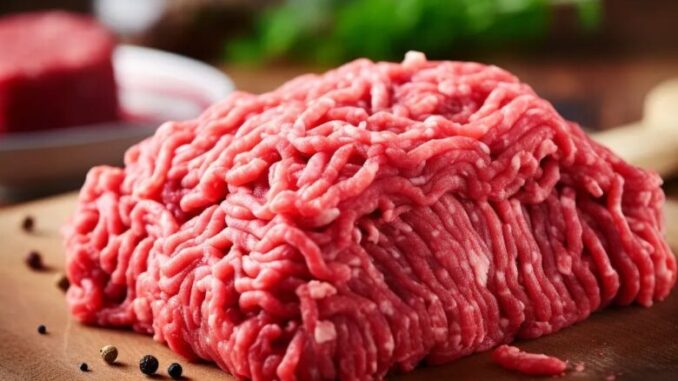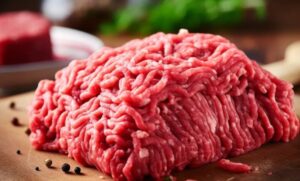
When it comes to preparing ground beef, a common query among both novice and seasoned cooks is whether or not to rinse the meat before cooking. The concept behind washing ground beef is to reduce the fat content or to cleanse the meat from potential contaminants.
However, the question remains: is this practice recommended, or does it potentially cause more harm than good?
Understanding the Concerns with Rinsing Ground Beef
Let’s explore the various reasons someone might consider rinsing their ground beef and address whether those reasons stand up to scrutiny:
1. Reducing Fat Content
Some believe that rinsing ground beef washes away excess fat. While it’s true that you can remove some surface fat by rinsing ground beef in hot water, the amount of fat reduction is minimal. Moreover, much of the flavor in beef comes from its fat content, so rinsing it could compromise both taste and texture. Additionally, when ground beef is cooked, the fat that melts away can easily be drained off, which is a more effective method of reducing fat content than rinsing.
2. Eliminating Bacteria and Contaminants
Another common reason for rinsing might be to remove bacteria or contaminants that are on the surface of the beef. However, it’s important to note that most bacteria on ground beef are eliminated through proper cooking, which means heating the meat to an internal temperature of at least 160°F (71°C). Rinsing with water does not kill bacteria; in fact, it can increase the risk of spreading bacteria around your kitchen—on countertops, sinks, and other surfaces—through the process called “cross-contamination.”
The USDA’s Stance on Rinsing Meat

The United States Department of Agriculture (USDA) does not recommend rinsing meat or poultry before cooking. They assert that washing these products is not necessary and is more likely to spread bacteria to other foods, utensils, and surfaces through cross-contamination. They strongly advocate for proper cooking techniques to ensure that any pathogenic organisms are destroyed.
Proper Cooking Techniques Over RinsingIf not rinsing, then what? Instead of washing ground beef, focus on the following safe handling and cooking practices:
1. Clean Surfaces and Utensils
Before and after handling ground beef, always wash hands, cutting boards, dishes, utensils, and countertops with hot soapy water.
2. Separate Raw Meats from Other Foods
To prevent cross-contamination, keep ground beef separate from other foods both in the refrigerator and during preparation.
3. Cook to the Right Temperature
Invest in a meat thermometer and ensure that ground beef is cooked to an internal temperature of 160°F (71°C) to eradicate harmful bacteria.
4. Drain Excess Fat After Cooking
After fully cooking the ground beef, you can drain off the excess fat from the pan, achieving a similar effect to rinsing without the risk of spreading bacteria.
Conclusion
Rinsing ground beef is not only unnecessary, but it also does not significantly reduce fat content and presents potential risks for food contamination in the kitchen. The key to safe and delicious ground beef is in the handling and proper cooking techniques. Always prioritize temperature control and kitchen hygiene over the misconception that rinsing can cleanse your meat. By doing so, you’ll enjoy tasty, healthier meals without the unintended spread of bacteria.
Leave a Reply